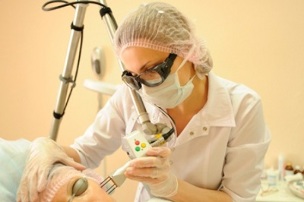
Fractional rejuvenation involves the use of a laser. It is an extremely complex procedure that solves a wide range of skin problems that inevitably arise as the body ages. It requires a high level of professionalism from the professional who does it. Only specialists with a medical degree and courses in laser equipment are eligible for laser rejuvenation. The procedure can have a negative effect instead of the desired rejuvenation with an unqualified cosmetologist in a questionable clinic.
Fractional laser treatment is a worthy option for those looking for facial rejuvenation without surgery. Incidentally, this method is applied not only on the face but also on the body. Especially with the help of a laser, it is impossible to make scars and stretch marks invisible. So laser rejuvenation will be interesting for those who have long been interested in the problem of stretch marks removal on the body.
Versions of fractional laser rejuvenation
The fractional laser emits not one, but many microscopic beams, allowing it to act finer and finer on the skin.
Fractional laser rejuvenation can be divided into two types:
- The first type of fractional rejuvenation is often referred to as laser rejuvenation. During such a renovation, the laser removes very small areas of the top layer of skin that are some distance apart. This activates the regeneration processes of the skin. This procedure uses a carbon dioxide laser.
- The second type of fractional rejuvenation is the effect of the finest rays on skin surfaces of strictly defined depths. However, the surface of the skin is not affected by injury, and the production of collagen is activated in the deep layers of the skin, and the areas of skin removed by the laser are filled with new cells.
Different clinics use different types of lasers, but the principle of the laser method of rejuvenation is the same in all cases: to cause controlled damage to the skin, stimulating active recovery and renewal.
In each case, the doctor will see which laser technique will be most appropriate. Prior to each procedure, the laser is adjusted individually for each patient.
Skin care after fractionated skin rejuvenation

The doctor performing the procedure will tell you how to care for your skin after laser rejuvenation. The choice of cosmetic products depends on the type of skin, its individual characteristics, and the tasks and size of the procedure performed.
2-3 days after the session, a crust forms on the skin which is rejected within 3-4 days. At this time, use the cream recommended by your doctor. Then, for 1-2 months, a good sunscreen should be applied to the skin every day before exiting, and a nourishing regenerating cream should be used at night.
It is important that laser rejuvenation not only corrects existing age-related changes, but also further slows down the aging process itself, triggering the mechanism of skin cell renewal.
Who is suitable for fractional rejuvenation and what procedures are used to combine it
The procedure is always carried out only after prior consultation with a specialist. With strongly expressed age-related changes, laser rejuvenation will be the most appropriate, not laser rejuvenation. In some cases, it cannot be done at all without plastic surgery: blepharoplasty, endoscopic face lift, or the introduction of fibers for lifting. But here, too, hardware techniques, especially laser rejuvenation, help enhance and maintain the effect.
Plasma lift and mesotherapy are perfectly combined with laser techniques, including biorevitalization with hyaluronic acid.
The laser rejuvenation procedure is not suitable for pregnant and lactating women, people with cancer, diabetes mellitus, severe hypertension, psoriasis and dermatosis. Herpes rashes and inflammatory processes in the affected area are also contraindications to the procedure. Laser rejuvenation is not recommended for those who have keloid scarring or a family history of vitiligo.























